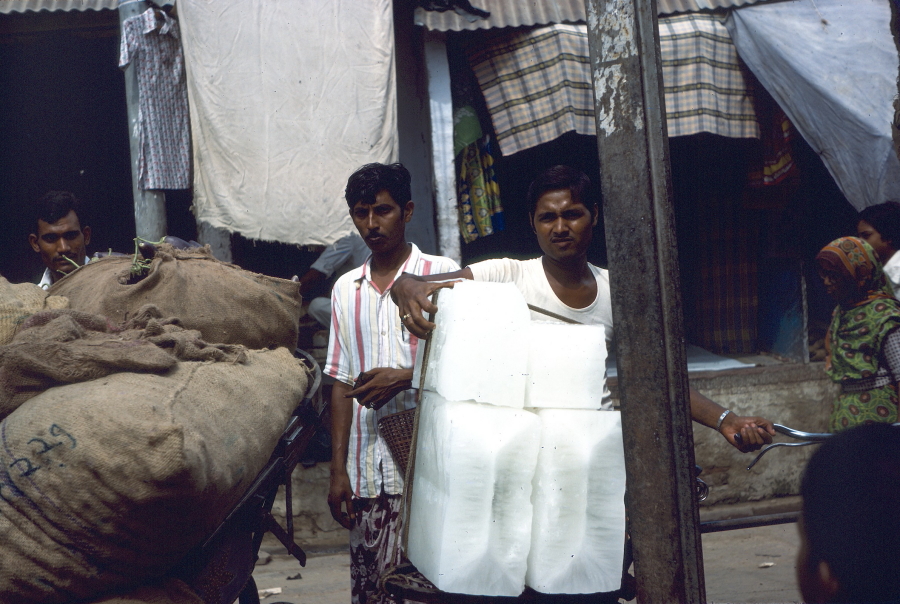22nd August: A small town near the Taj Mahal
Outside and a few metres from the grand entrance of the Taj Mahal I found myself passing under a narrow arch and into a small town apparently unused to visitors.
Narrow streets, stalls on either side, tailors, millers, jewelers, sweets, fruit. Some of everything. Men, women and children going about their ordinary, everyday lives. Was this the real India? Is this what I had come to see?
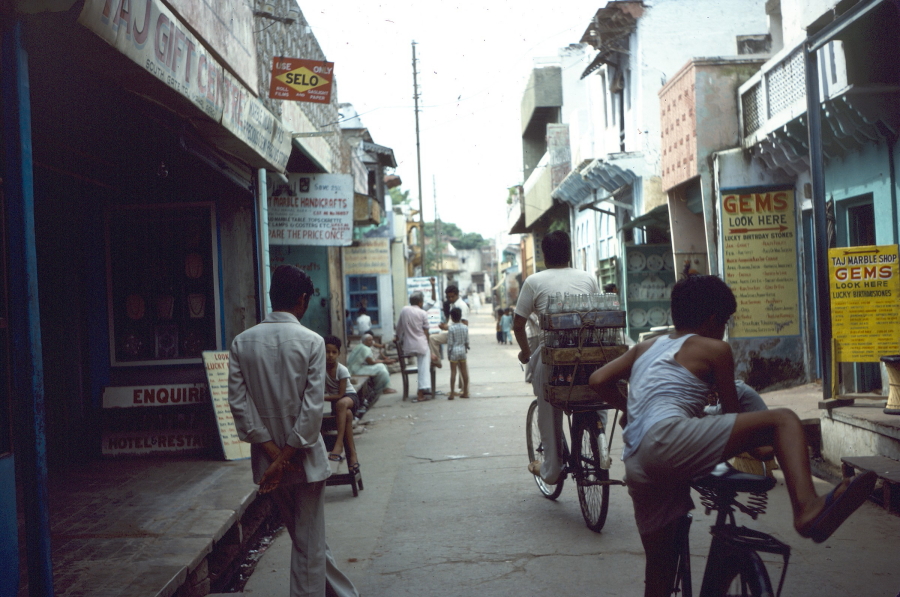 Entrance to small town
Entrance to small town
The streets seemed crowded after the deserted early morning streets of Agra and the spacious gardens of the Taj. I wandered around taking photographs but it was difficult as people either wanted money or kids eager for their picture to be snapped, stood in the way. I tried to take a picture of flies on a melon (why?), but the kid wouldn't move.
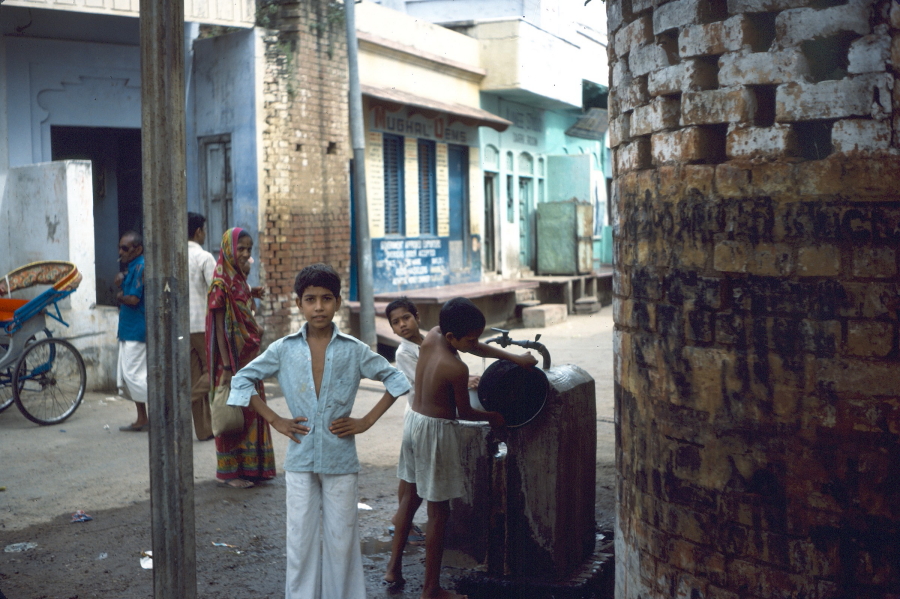 Boy by water pump
Boy by water pump
It was cleaner than Agra, no rubbish piled in the streets and the drains ran in neat, but still smelly, gutters along the edge.
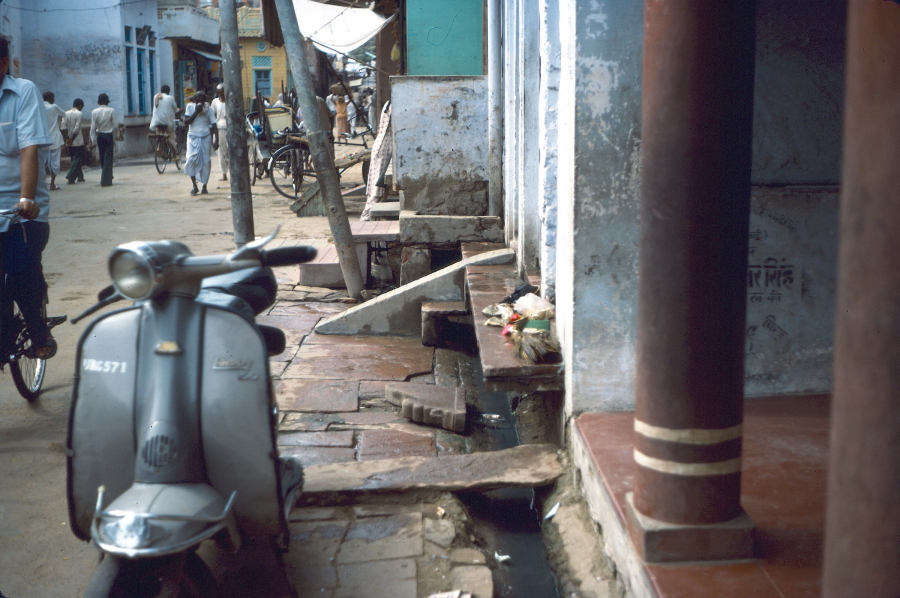 Scooter
Scooter
People were busy plying their trade, stopping to stare as I wandered by with my camera, groups of young children following me....
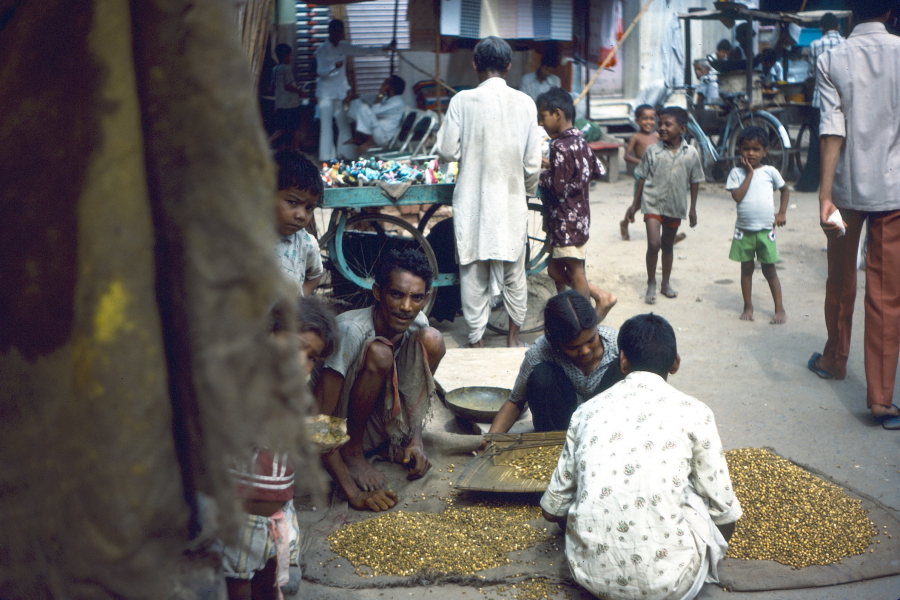 Street sellers
Street sellers
watching me closely as I bemused them by snapping their comings and goings with my camera.
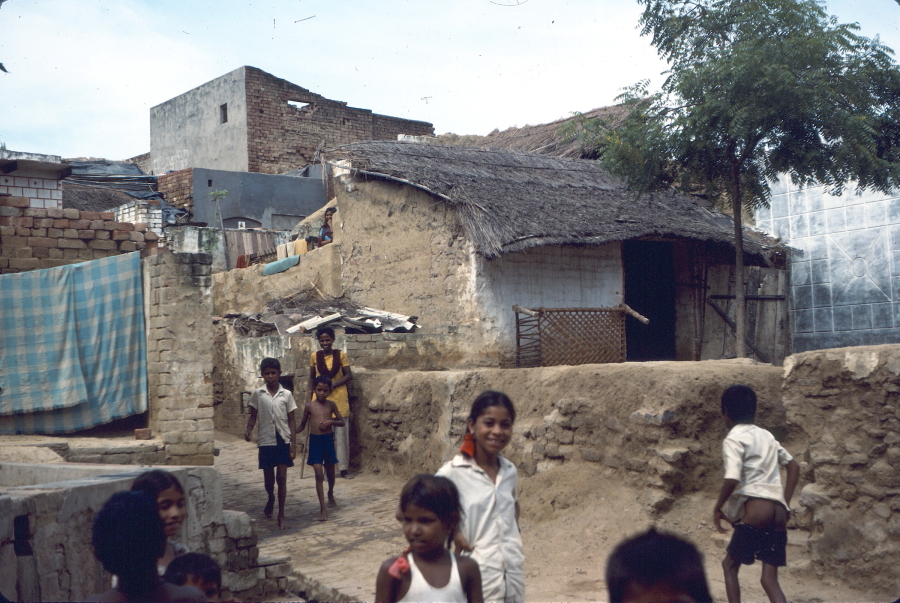 Villiage houses
Villiage houses
Slow train to Delhi
I needed to find a bank. I had almost no rupees left. I asked a rickshaw man to take me to Agra. He didn't. Eventually I persuaded him to take me to a place I thought I knew, but I was mistaken. He wanted Rs 20/- and I argued. He hadn't taken me where I needed to go and yesterday I'd been driven for hours for Rs 20/-. I had no change so I had to give him Rs 10/- to get rid of him. Still didn't know where I was and no bank in sight. Eventually resorted to changing money in a government registered shop, but it cost me Rs 20/- to get Rs 85/-. I felt ripped off again.
Now only 40 minutes to get back to the tourist bungalow to check out. No one could speak English. Kids around rubbed my skin - to see if the colour came off - I could remember doing the same when I was 6 and a kid from Pakistan arrived at my school. Finally found a rickshaw man who understood and knew where I wanted. He wanted Rs 6/- to get me back. It seemed steep but I was desperate by now so I accepted. I was relieved when I saw a familiar row of shop buildings concrete reinforcing rods indicating a missing upper storey (a common sight I came to realise).
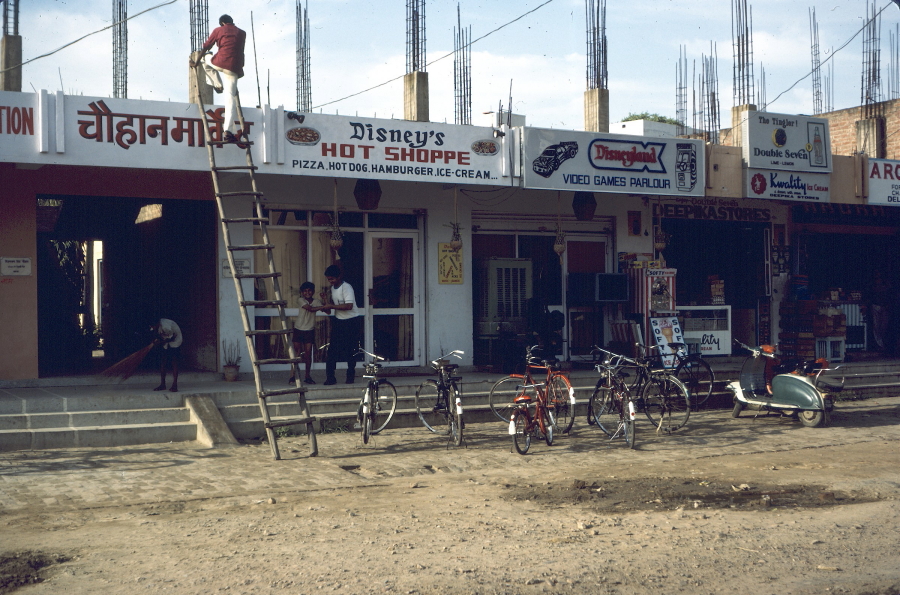 Missing upper floor
Missing upper floor
He got me back to the tourist bungalow with 15 minutes to spare. I checked out and now had a two hour wait at the station. As I waited a gang of workmen arrived, jumped onto the track and replaced a whole set of rail within an hour. They had barely finished and jumped out of the way when an express train came thundering through and over the newly laid rails. Phew ... I opened my eyes again and the train was safely passed.
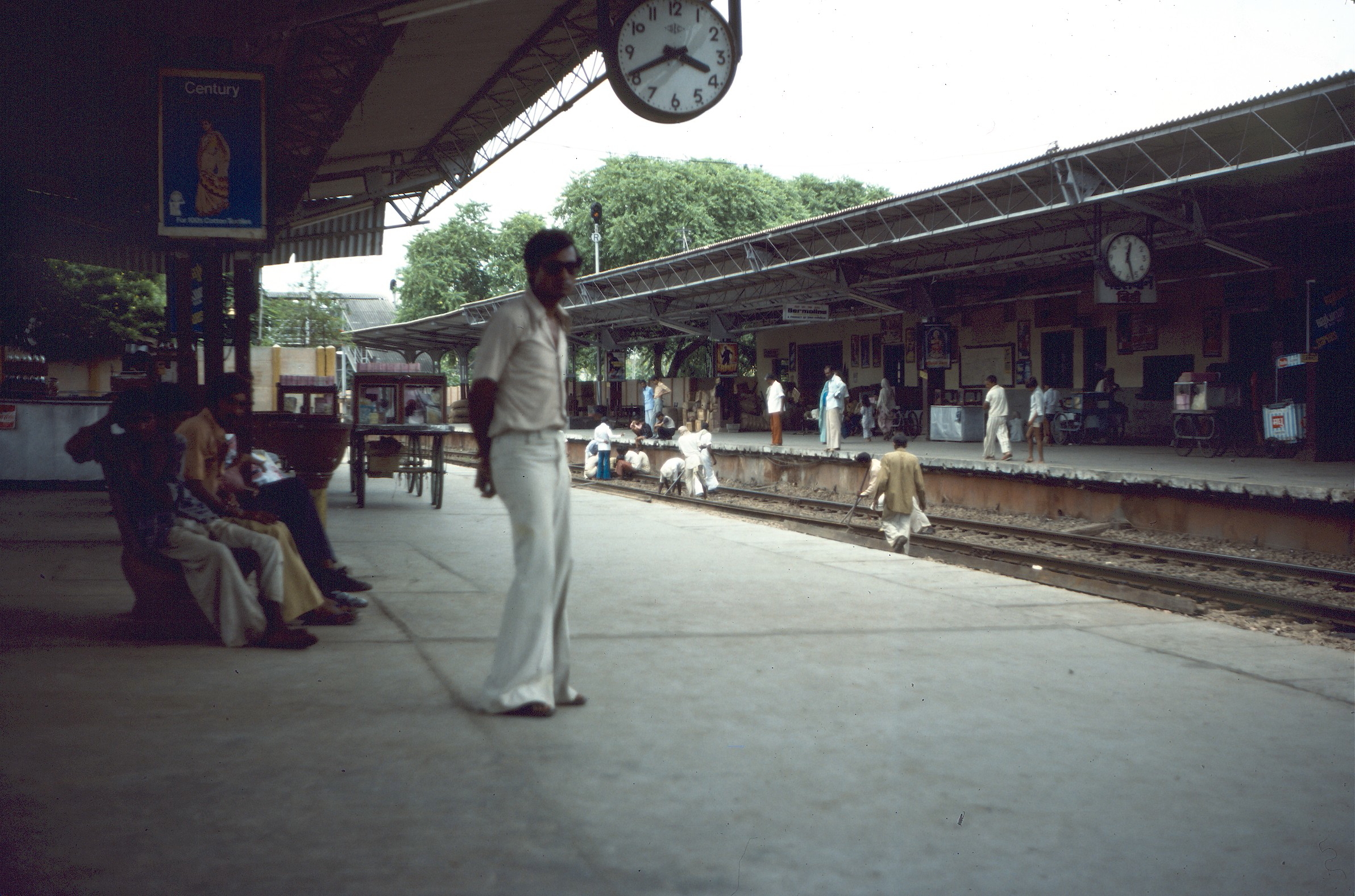 Workmen replacing rails
Workmen replacing rails
The station was busy but not crowed, kids played on the platform and street vendors mysteriously arrived with each train, leaping onto the tracks, filling the platforms and pressing their drinks, snacks and nic-nacs on patient (and not so patient) passengers.
My train arrived. It was absolutely packed. A young university student (or lecturer) who spoke excellent English had expressed surprise that I was waiting for THIS train. I didn't understand why - he tried to explain but by now we were too busy trying to board. He grabbed my rucksack and told me to climb on and push my way through the crowd to halfway down the carriage. It all happened very quickly. I did as he said. Amazingly he had acquired two seats. I sat down. He explained that this was the very slow train to Delhi, the Jannata train I think he said. It would stop everywhere and take more than five hours. He said I should have waited for the express which would overtake this train and arrive much earlier.
The train crawled along. It stopped frequently, often apparently nowhere. Each time passengers leaped in and out through the windows and traders worked the length of the train selling fruit, samosas, chappatis, biscuits and char (tea) in little earthenware cups that looked like small plant pots. When the train moved off the traders ran alongside, making that last deal. I tried the char but it was too sweet, boiled up with the milk and sugar already added. I tried the fruit. I was thirsty - a cucumber seller came over. "Yes please". Quick as a flash he quartered the fruit length ways and smothered it in salt. I looked horrified he looked puzzled. "No salt thank you". Big grin, another cucumber. Again quickly quartered and this time, just as speedily as before, he smothered it in sugar. Grinning even more, he presented it. I paid up. No chance of plain cucumber. It was the only train I took in over three weeks that didn't have bars on the windows.
The wooden seat grew harder with the passing hours. My companion told me about the type of people who lived in the little huts, some little more than mud and straw, I saw from time to time along our route. He said they worked hard but earned only about Rs 200/- per month. No wonder the rickshaw men had been keen. It was dark when I arrived in Delhi, thankfully I took a rickshaw to Golf Links and a cooked mean. Jane looked ill, covered in insect bites.
